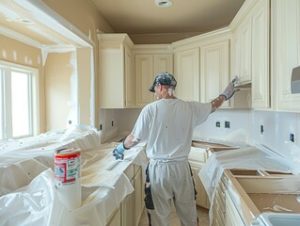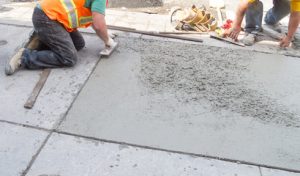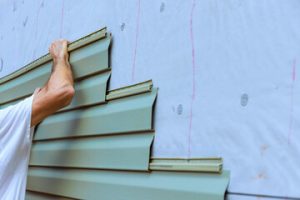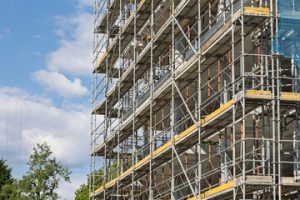A quality paint job for cabinets takes time, skill, and expertise to complete successfully. Hiring professional cabinet painters ensures that your home renovation project is completed in a timely manner, minimizing the amount of time that your kitchen is out of commission.

Professional painting also adds a protective finish to your cabinets, protecting them against water damage and mildew for years to come. Contact Modesto Cabinet Painters for professional help.
Cabinet painting is a time-consuming project that requires meticulous preparation and attention to detail. Hiring a professional ensures that your cabinets will look beautiful and last for years to come, boosting your home’s value aesthetically and financially.
Cabinet painters specialize in precise projects like cabinets, utilizing specific tools and application techniques for this often high-visibility surface. They also know which types of paint are best for kitchen conditions, with finishes that stand up to grease and heavy use. This level of expertise is what separates Cabinet painters from house painters, and can make or break your DIY kitchen upgrade.
Besides knowing which products are best for the job, professional cabinet painters also have the ability to recognize and address potential issues before they occur. This includes preemptively repairing scratches or dings, degreasing surfaces to prevent future damage, and using top-of-the-line products that will not peel or chip over time. Moreover, cabinet painters have the experience to easily work around nooks and crannies that can be difficult for homeowners to reach with a brush.
When you hire a cabinet painting specialist, you can rest assured that your project will be completed in an efficient and timely manner. This minimizes the time your kitchen is out of commission and reduces stress on your family. It also means that you can enjoy your newly painted kitchen sooner rather than later.
While many homeowners are tempted to tackle cabinet painting on their own, DIY is often a recipe for disaster. Not only does it take time to learn the process, but there is a chance that you will make costly mistakes along the way. In addition, if you are not careful, you may end up with uneven or bubbling paint. By contrast, experienced cabinet painters are skilled at making sure that the job is done correctly and efficiently. They can even provide upgrades, such as glazing and antiquing, to transform your cabinets into a truly custom feature in your home.
Time-Saving
Painting cabinets can be a lengthy process, especially for DIY enthusiasts. They may need to scrub, sand and prime surfaces to ensure proper adhesion. These efforts are crucial for durable results and to ensure your cabinets look great in the long run. Using the right techniques is also important to avoid costly mistakes and re-work. A professional cabinet painter will take a streamlined approach to the project, minimizing time spent on prep and application.
Skilled painters use their experience to ensure flawless and precise results that can be difficult for amateurs to replicate. They are skilled in sanding and priming to prepare surfaces for the finish coats, and they apply the layers evenly to achieve smooth, consistent results. Professionals can also help you find the best products and materials to reduce your total cost of ownership.
The best part is that when you hire professionals, the entire project is stress-free. This means that you can focus on your work, family and other priorities while the renovations are taking place. If you are able to hire someone to complete the entire project, it is even better as this can minimize the amount of time that your kitchen is out of commission.
It is easy to assume that hiring a professional will be expensive, but it can actually save you money in the long run. A DIY approach to cabinet painting can result in costly flaws like visible brushstrokes or drips. This may not seem like a big deal at first, but these imperfections can detract from the appearance of your home and decrease its value if you ever decide to sell it in the future.
By contrast, hiring a professional cabinet painter can give you a beautiful new kitchen without breaking the bank. They can provide a range of finishes to match your personal style and complement the overall décor. They will also stay up-to-date on the latest design trends and techniques, ensuring that your project is completed with contemporary appeal. They can even update your hardware to transform the entire look of your kitchen.
Convenience
Professional cabinet painters have the experience, skill, and equipment to get the job done quickly and efficiently. This allows you to enjoy your updated space sooner and minimizes the disruption to your daily life. Their streamlined process also helps to reduce the risk of costly mistakes that can occur during DIY projects.
In addition to their technical expertise, cabinet painters offer valuable insights into color selection and how it will complement your space’s overall aesthetic. They understand how lighting and existing decor can impact color choices, helping you achieve a look that is cohesive and visually appealing. This knowledge can help you avoid costly color mistakes that may require additional repainting down the road.
Cabinet painting is a multi-step process that includes cleaning, sanding, and priming. A good primer provides a strong surface for the finish coats and ensures that your new paint will last for a long time. Professional painters use high-quality, premium products that are designed for durability and stain resistance. This is especially important for a high-traffic area such as a kitchen.
Skilled cabinet painters also provide a variety of finishing options that enhance the appearance of your cabinets. This can include textures, glazes, or decorative stencils. This level of customization offers a unique, personalized touch to your kitchen and adds a layer of visual interest that can elevate a simple cabinet refinishing project into a more sophisticated upgrade.
Additionally, skilled painters have access to specialized materials that are not available to the public. These products can offer enhanced durability, stain resistance, and ease of maintenance – important qualities for a high-traffic area like a kitchen. By using these specialty products, a skilled cabinet painter can create a beautiful and functional finish that is more durable and easy to clean than standard residential paints. This will extend the lifespan of your new finish and reduce the likelihood of chipping, peeling, or mildew growth. This is an extra measure of peace of mind and a significant value-add that can increase the resale value of your home.
Value
Cabinet painting is a great way to boost your home’s value without undergoing a major renovation project. With a fresh coat of paint, your cabinets can look brand new, giving you the best return on investment in your kitchen and other living spaces. Unlike major renovations, a fresh coat of paint can be completed quickly and with minimal disruption to your life. Hiring a professional can ensure that the job is done right the first time, saving you money in costly repairs or replacements down the road.
Professional painters also use industry-grade materials that are unavailable to DIYers, making the results more durable and long-lasting. Additionally, they often have access to wholesale pricing that lowers the overall cost of the project compared to retail prices for materials. Finally, they can help you choose the right colors and finishes for your cabinets based on their experience with various design styles and color trends.
Aside from technical expertise, a professional cabinet painter is committed to providing an exceptional customer experience. They prioritize clear communication, timely completion of projects, and maintaining clean and organized work environments. This helps to ensure a smooth, hassle-free experience for their clients, which in turn can improve satisfaction and reduce the risk of mistakes that may impact the quality of your finished results.
Another advantage of hiring a professional is that they can provide you with an upfront quote with no hidden fees. Depending on the size and complexity of your project, they can also offer discounts to accommodate your specific needs.
Aside from the obvious benefits of hiring a professional cabinet painter, you should always seek references from past clients and make sure that they are licensed and insured. Additionally, if you’re unsure about what type of finish or color you should use, a reputable company will be happy to provide you with samples of previous work so that you can see the results for yourself. You should also ask if they have any warranty or guarantee on their work, as this will be important in the event of an error or damage.








